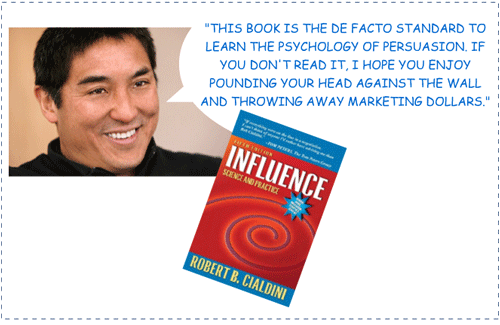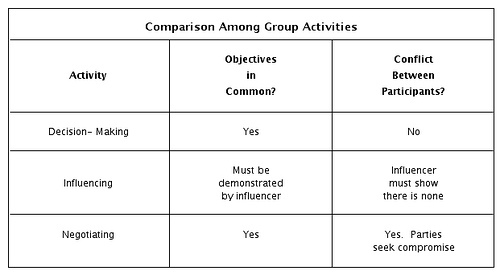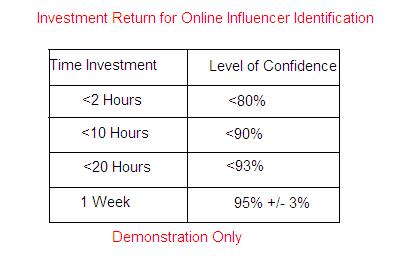 When someone publishes an article about Klout or Kred, they almost always take a polarizing viewpoint regarding influence metrics. Some bloggers take it upon themselves to be Klout’s biggest evangelist when their score is high, and then become the platforms biggest critic when an algorithm change adjusts it. Others criticize Klout and Kred for not being effective at uses that they weren’t even developed to address.
When someone publishes an article about Klout or Kred, they almost always take a polarizing viewpoint regarding influence metrics. Some bloggers take it upon themselves to be Klout’s biggest evangelist when their score is high, and then become the platforms biggest critic when an algorithm change adjusts it. Others criticize Klout and Kred for not being effective at uses that they weren’t even developed to address.
I’m not the biggest fan of influence metrics myself, but when you consider the direction that marketing is moving, you can’t deny the value of a tool that can estimate the level of an individual’s influence. Forget about social media for a minute; Klout, Kred and other influence metrics are solutions to information overload.
It’s All About Making the Right Choices, and Informed Decision Making
We live in a complicated world where information is pushed on us loudly from every direction. There is no way that we could possibly listen to it all, and it’s easy to be overwhelmed. To cope with this mass of noise we’ve adopted a decision making approach based on generalizations. It turns out that when all things are equal, these generalizations actually work. With a limited amount of information, time and investment, most people can use subtle cues to make a correct decision.
We do this everyday. When you visit a news website you are presented with a long list of headlines and pictures. Based on what you’re looking for, the structure of the headline, the featured image, and prior experience is often enough information to decide whether you should spend your time reading that article, or move on to another.
In Robert Cialdini’s book “Influence: Science and Practice” he says that a group of professionals known as ‘compliance experts’ can effectively exploit these generalizations and turn them into weapons of influence, causing others to make decisions in their favor. These compliance professionals consist of salesmen, pollsters, political activists, and (gasp) marketers!

Guy Kawasaki is just one thought leader that recommend’s Cialdini’s book on persuasion and influence as the standard in modern marketing.
Weapons of Mass Influence
When a marketer is effective, it’s hard to tell that they’re exerting any influence at all. The best marketers make you feel like you’re in the driver’s seat, and that you’re the beneficiary of any quid pro quo that takes place.
The most common ‘weapons of influence’ are:
Reciprocation: People generally feel obliged to return the favor when you do something nice for them. This is especially true when they perceive your actions as a higher value. An example is when an influencer re-tweets their target, who has a lot smaller following. The target perceives a high value, and will be more likely to be influenced by the influencer’s future campaigns.
Commitment and Consistency: People thrive on consistency. They’re also more likely to make additional commitments when they feel invested. When e-mail scammers convince their targets to send them a small amount of money, it’s usually even easier to get them to send a larger amount because they feel like they’re already invested in the scam. An initial 200$ scam can quickly evolve into a $1,200 scam because the fear of losing the initial 200$ overrides the target’s better judgement.
Social Proof: Social Proof can take several forms. People will often trust you more if it’s clear that others trust you as well. An influencer with 100,000 followers and dozens of testimonials on their website will convince people of their integrity when a more qualified professional that doesn’t have the social proof can’t. Influencers have also been known to fake interviews, Infomercials have recently taken on the format of a talk show, complete with staged interviews and carefully chosen statistics.
Charisma: People are more likely to do business with people they like. Influencers can sway their opinion with humor or flattery. They are also partial to people they can relate to. Blue collar workers identify with other blue collar workers, and are more likely to vote for politicians that share a common background in employment. Physical attractiveness and perceived superiority can create a halo effect where influencers are deemed more qualified to make certain decisions than the target, despite the fact that effective influencers ALWAYS consider their own interests.
Authority: Authority is one of the strongest motivators for average people. In Stanley Milgram’s 1974 book “Obedience to Authority: An Experimental View” he recounted experiments that he conducted during his time as a professor of psychology at Yale University. The now infamous Milgram Experiment showed that an average person could be easily coerced into inflicting a great deal of pain on another subject if they were in the presence of an authority figure that insisted they continue. These experiments began in 1961 at the time Nazi war criminal Adolph Eichmann’s trial for war crimes was about to begin. The results suggested that it was possible that thousands of Nazi subordinates were “just following orders”, and that it was in our nature to do so.
Scarcity: About a year ago I went to a local electronics store to shop for computers. I was seriously considering the purchase of a Hewlett Packard Ultrabook, but decided to wait on product updates. The owner insisted that he only had the one, and that he likely wouldn’t get another order in for weeks. He almost talked me into buying it.
Three days later my cousin came home with the same laptop. It was very nice, but I decided that I was glad I didn’t purchase it because the lack of a DVD drive. My cousin told me how it was the last Ultrabook in the area, and that no one else would have one until the new models came out. I went with him to the store to buy a wireless mouse, and upon entering we interrupted the store owner going through the same Ultrabook sales pitch with another customer. I got the salesman off to the side and asked about his ‘scarcity method’ of sales, and threatened to expose it if he didn’t tell me how many Ultrabooks they actually had. It turns out that they had at least a dozen, and were overstocked because area students wanted DVD drives more than they had projected.
The idea that something is rare, or the fear of missing out is a major influencer when it comes to purchasing power. Influencers often portray their product as a scarce commodity that has a limited supply and high demand, even if that isn’t true.
Step By Step Influence
Influencing another party is not always the correct approach. Given the circumstances, we may need to enter into a negotiation, or simply select an appropriate solution together.

Influencing someone isn’t always necessary or effective. Assess the situation and use the cues available to determine the best course of action.
Example: If I am trying to sell you web hosting, your response to my initial offer will determine how I approach the sale. If you agree that you need hosting and that you’d like to purchase it from me, we simply need to select the correct hosting plan together. If You insist that you do not need web hosting or that your current host is superior, I still have the opportunity to attract your business by negotiating a lower price or a high value offering. If you do not have web hosting, and are unsure of the benefits, that’s when influence becomes a correct response.
- The process of one-on-one influence is fairly simple.
- Give an opening statement.
- Confirm the target’s needs.
- Present your offer as a viable solution.
- Listen to, and evaluate the target’s response.
- Respond Appropriately.
- Make your offer.
- If the offer is accepted, you are successful. Thank your target, who is now a client.
- If the offer is refused, analyze the refusal and make a decision about the best way to initiate another offer, repackage the original offer, or convince the target that your solution is indeed optimal.
What is Real?
These ‘weapons of influence’ were identified by Robert Cialdini in 2003, several years before Facebook opened branded pages for business. Today, they’re eerily representative of the social media marketing movement. People stress relationships and value, but major influence usually finds its way back to one of these six methods.
- Reciprocation: Blog Commenting, Re-Tweeting influencers, Triberr,
- Commitment and Consistency: E-mail marketing, blogging, regular Facebook posts, up selling
- Social Proof: Twitter, Klout, LinkedIn Recommendations, Connect.me, testamonials, customer reviews
- Charisma: Professional photos, flattery, video, achievement lists, humble brags, photo manipulation
- Authority: Publishing books, testimonials, prominently displaying job titles, influencer lists
- Scarcity: Limited offers, stated inability to engage due to workload, exclusive content, beta testing, invite only.
When a public figure seems too good to be true, they probably aren’t. Anyone that would be considered effective at online business is self aware, and are certainly aware of the effectiveness of these weapons.
Before you write effective influencers off as manipulative and dishonest though, consider your own plight. If you have your own business, you will find yourself using influence at one time or another. These are natural techniques and tactics whether you’re fully aware of them or not. Wouldn’t you rather learn business from the person that has mastered influence?
Never Enough Information
If you had every piece of accurate information available, there would be no need for any of this analysis, procedure, or secret weapons. The problem is that your knowledge is incomplete at best, may not be reliable, and involves a lot of intuition.
During any attempt at influence you will need to place values on every variable. You don’t have an unlimited time to research everything, so any tool that can quickly offer a viable metric should be a welcome addition to a marketer’s tool kit.
No matter what their shortcomings are or how much you dislike being a metric yourself, both Klout and Kred are viable metrics when you’re tasked with identifying influential individuals out of a large group that are active online and comfortable with their role as an influencer.
Laws of Diminishing Returns
Without Klout or Kred you could still identify influencers. Finding the most influential bloggers or personalities on social media isn’t hard because they’re usually pretty visible. The process gets much harder when you’re tasked with finding 25 top influencers in a specific niche category that will be willing to participate in an online marketing campaign for a nominal fee. Klout and Kred could both create a list of 25 influencers for your campaign in just a few minutes, and the results would be comparable to a quick selection made by an employee with minimal experience on the given topic.

This table illustrates how simply generating a list of influencers with an Influencer Identification app can provide results that are adequate for most uses, while extended research will often yield results that mirror the list thatthe application generated to a high degree, or consist of influencers that aren’t necessarily better choices than the program’s selections.
You could identify a better group manually, but it would take exponentially more time and resources to complete. These influence metrics exhibit an extreme case of diminishing returns in all the cases of group influencer identification that I’m aware of. Why spend a week researching and compiling a list of 40 automotive influencers when Klout can create a similar list that performs just as well in the given scenario in less than one minute?
Of course the greatest results from group influencer identification come when the researcher uses a combination of influencer identification tools and their own research. Start out by compiling a Klout list of 50 names that will be whittled down to a final list of 25 after spending a couple hours investigating your preliminary findings. This would take very little time compared to research that was wholly manual and will often yield a better list. At the very least it takes advantage of a computer’s analytical capabilities to complete the hardest part of influencer identification in an extremely short amount of time.
Smoke Em’ if You Got Em’
By allowing your personal bias to rule out the use of tools that are very effective at what they do, you’re only hurting yourself. An average mid-sized company encounters hundreds of instances every day where an estimate of a person’s online influence would be beneficial. All this means is “how many eyeballs will likely be exposed to sentiment that this individual posts online”. Researching every single person’s social media presence isn’t practical, but we humans have adapted to make accurate predictions based on limited information. Klout and Kred are just another source of information that you have full context on, and a thorough explanation of what they mean.
Do you have a prejudice against influence measurement tools because of what they represent? Have you used the measurements in any practical ways to improve the results of your own marketing campaigns?
- The Evolution of Marketing: From Catalogs to Cat Blogs - November 8, 2022
- How to Make a Tweet This Link - February 5, 2022
- Dramatically Improve Marketing Results with Advanced Analytics - September 20, 2021
- The Next Chapter for Social Media Sun - June 4, 2013
- Optimizing Your FAQ to Maximize ROI - December 5, 2012
- Blogging Isn’t a Rocket, It’s More Like a Roller Coaster - November 19, 2012
- Weapons of Influence and Klout’s Role in Marketing - November 17, 2012
- The Biggest Problem With Inbound Marketing Blogs Today - November 16, 2012

WoW!! Great Article! 10+
Like and Shared!
Have you read my book Return On Influence? You have basically summarized a lot of it here : )
Haha not yet Mark, it’s definitely at the top of my marketing related reading list, but I haven’t had much time for reading more than articles this year! We obviously subscribe to many of the same sources and share a lot of the same opinions though. I’d like to think that anyone would come to many of the same points if they looked at prior research and examples around them, and I look forward to the chance to read Return on Influence because I think at the very least it will shine light on a lot of things that may take me 10 years to stumble upon at this pace.
I had never heard of Cialdini’s work until recently when I was researching charisma and reciprocation, and when I read the outline I thought it was a basic explanation of how non-celebrity Twitter users manipulate their followings; until I saw that it was written in 2003. It’s almost prophetical. I only read condensed outlines of his work, but I’d love to know what he based his observations on (were there online forums or earlier forms of online networks involved?). I also thought that his work wasn’t given the credit it deserved until I finished the article and searched for a picture – the picture of Guy Kawasaki recommending the book came up on an SEO Moz article from 2010 that outlined the “weapons of influence.”
I thought of you as well Mark. I know about the book, have heard some good reviews, and I’ve read a few posts you’ve written about the process of publishing, how you handled the research, and how you pitched the book without a pre-conceived outline. Knowing that you dedicated a lot of time to researching influence and related topics, I was wondering what your thoughts were on the completeness of Cialdini’s studies.
Cialdini did not consider the online world at all in his book. He went under cover for three years to determine how people acquired power on their jobs.
But as I read his books, it seemed to me that something was missing when you consider the Internet. I interviewed Dr. Cialdini and he agreed. That became the central thesis of my book. How do you acquire power in a world without bosses and org charts? The answer is in Return On Influence.
Mark
Please Pardon iPhone-related typos
Adam, I have to say I really enjoyed this post and your analysis on this topic. I many times skim posts due to the volume of information I take in in a day and the projects I have to put out. Though the post was longer, I read it all and enjoyed spending the extra time to hear your analysis. I know we share each other’s stuff online, but this post really made me a fan of your writing. Well done, let’s make sure we are connected on other networks and let me know if I can help you or promote something for you, I am happy to do so :] I’ll light up the sharebar for you on this one.
Thanks Ross, I’m glad you enjoyed it. I will check you out on a couple of networks and we’ll see what is going on. I would like to add a commentary to the article though, and if you enjoyed it, this should make everything whole for you.
I kind of blended 3 different articles on Influence together in this one. The post begins and ends with information bombardment and Influence metrics as a tool to make snap decisions with little information. Then, I go into Cialdini’s ‘weapons of influence’, and show how many common practices in social networking were identified in the past as a method to influence others. Next, we look at influencing others from a strategic point of view, and as an action taken by an influencer. I tied them together for this simple reason: we often deny the value of Klout and Kred because they are shady. Who wants to be tagged with a score that doesn’t measure up to the score you put on yourself? For the most part, there is a reason why someone else’s score is higher than yours. Whether that’s activity, true influence, the circle of friends one keeps, or another variable doesn’t really matter because in the absence of a better metric or knowing each person individually, a Klout or Kred score can put you in the right ballpark.If you’re going to deny Klout or Kred as a viable tool for serious outreach campaigns (I think for the most part this comes from a place of ignorance by people that aren’t familiar with how a corporate team approaches group outreach, but there are lots of instances where I know for a fact that the person(s) critical of Klout have had plenty of experience with those types of campaigns), why not deny influence as an objective/strategy/tactic altogether? I don’t like it when someone uses these ‘weapons of influence’ with an objective in mind; it seems dirty and underhanded to me. However, I would do better to identify and utilize those weapons myself, regardless of my personal bias. They’re a fact of life for someone in digital marketing, and anyone that says otherwise is lying to themselves. I would just do better to recognize the intended value of those influence metrics as well, utilize those tools myself, regardless of my personal bias or viewpoints. It isn’t altruistic, but if you’re honest with yourself, it’s just how it is.I should have put all this in the article, but it was so hard to tie it down in the first place I overlooked the relevance of it all.
Adam, I understand, sometimes I start on a subject but there are so many interesting tangents that do add value that sometimes it moves the course of the post. One thing I try and do is mindmap my posts so I know the points all lead to the right place and I can see how clear the path is and then I write from there. I do this when I do a video and use the talking points which all tie into the main concept. Xmind is free and the best one out there I have found for right logic trees. Yes, I enjoyed following your logic and it lines up with how I approach topics so it resonated with me and I will be reading more of your stuff. Maybe we can connect and see how else we might be able to help each other.
Adam, this is probably one of the best articles on influence I have read in a long time. I agree in particular that authority and context are key to influence.
The section on “the law of demising returns” however should mention that there is technology out there that is dedicated to finding the top 50 influencers in any niche market. Whilst Klout and Kred score popularity and have a shallow understanding of context, tools such as Traackr look at online conversations to discover the most relevant influencers in specific conversations in minutes (Disclaimer: I am a VP at Traackr).
Have a look and let me know what you think
I will take a look Nicolas. Klout’s algorithm takes a lot of variables into account, and Kred has a more straightforward measurement. They’ve gotten a head start on other technologies, so it will be hard for another company to catch up. I’ll let you know what I think when I look at it.